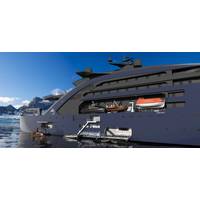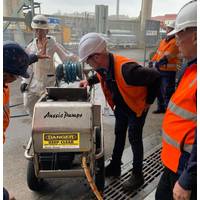Molten Salt Reactors: Maritime’s Nuclear Option

A race is being run by nuclear scientists and ship designers. The prize? “Decarbonization’s” holy grail — believed to be a “small” thorium-fueled, molten-salt rector’s unlimited power to propel sea trade. At the same time, a recently revived discussion among leading marine-nuclear thinkers revolves now around how to put an ultra-modern, as-yet non-existent marine reactor aboard a modern commercial vessel. As with nuclear power generally, shipborne reactors produce national discussion first, then discovery.
High Pressure Water Blasters for Shipyards: Aussie Safe Operator Free Training

Australian Pump, an Australian designer and manufacturer of high-pressure cleaning equipment, was chosen to design and build 4,000 psi high pressure water blasters for Sydney’s Garden Island Dockyard. The machines, called the Aussie Atlas, feature an all stainless steel construction and produce a 4,000 psi 16 liter per minute performance. Designed for working on a wide range of vessels in the dry dock, the machines offer fast and efficient cleaning.With up to 30 machines working at any one time in the dock, safety is key.
